
Two blocks A and B are shown in figure. The minimum horizontal force F applied on Blocks B for which slipping begins at B and ground is
100 N
120 N
50 N
140 N
The correct Answer is:A
The sliding shall start at lower surfacfe first
if F>0.5[10+10]g
or F>100N
Similar Questions
In the previous problem. The friction force applied by ground on block B is
View SolutionTwo blocks A and B of masses 2kg and 4kg are placed one over the other as shown in figure. Atime varying horizontal force F=2t is applied on the upper block as shown in figure. Here t is in second and F is in newton. Drow a graph showing acceleration of A and B on y-axis and time on x-axis.Coefficient of friction between A and B is μ=12 and the horizontal surface over which B is placed smooth. (g=10m/s2)
 View Solution
View Solution
Knowledge Check
- Question 1 - Select One
Two block A and B are as shown in figure. The minimum horizantal force F applied to the block B for which slipping begins between B and ground is :
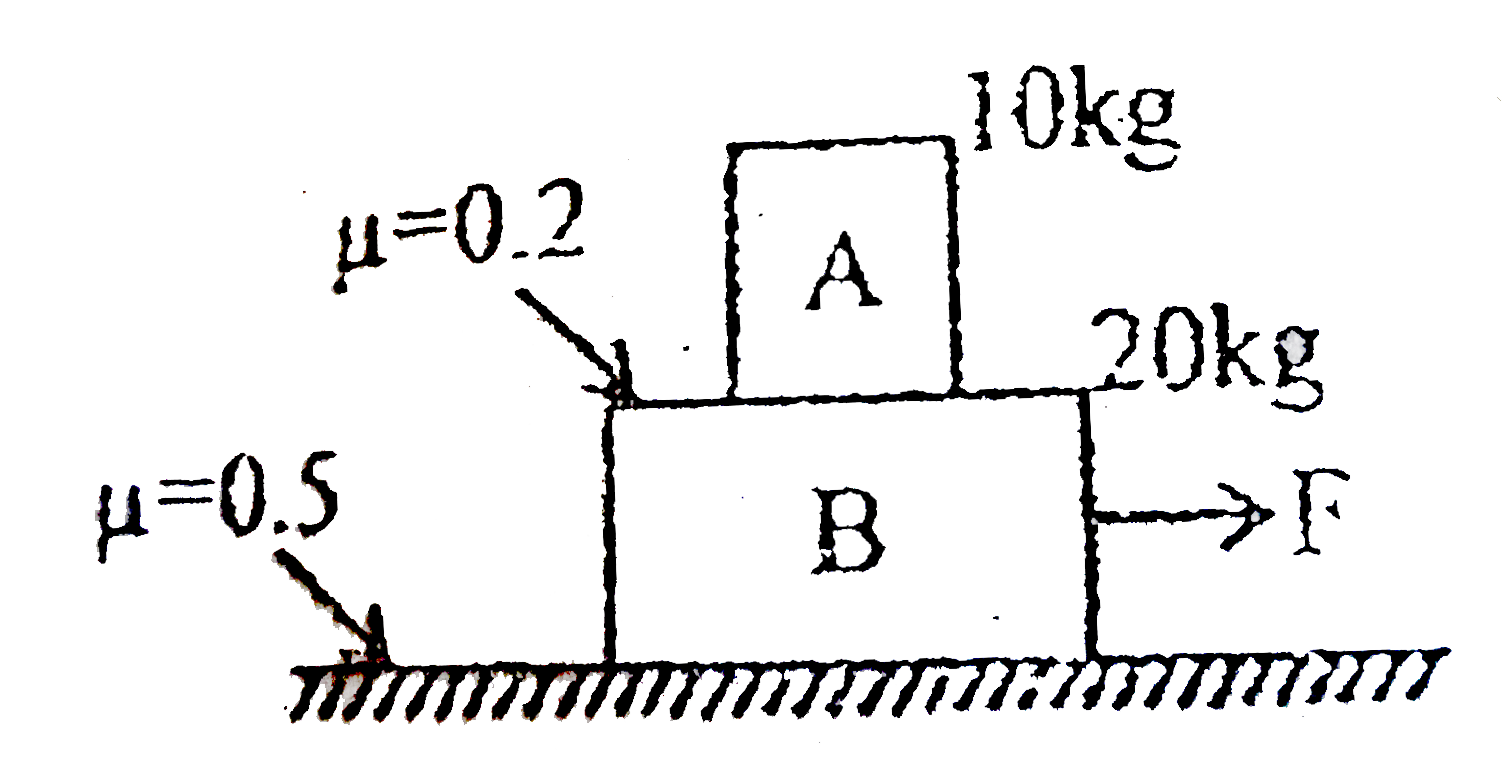 A20NB120NC150ND170N
A20NB120NC150ND170N - Question 2 - Select One
Two blocks A and B are as shown in figure. The minimum horizontal force F applied to the block B for which slipping behins between B and ground is :
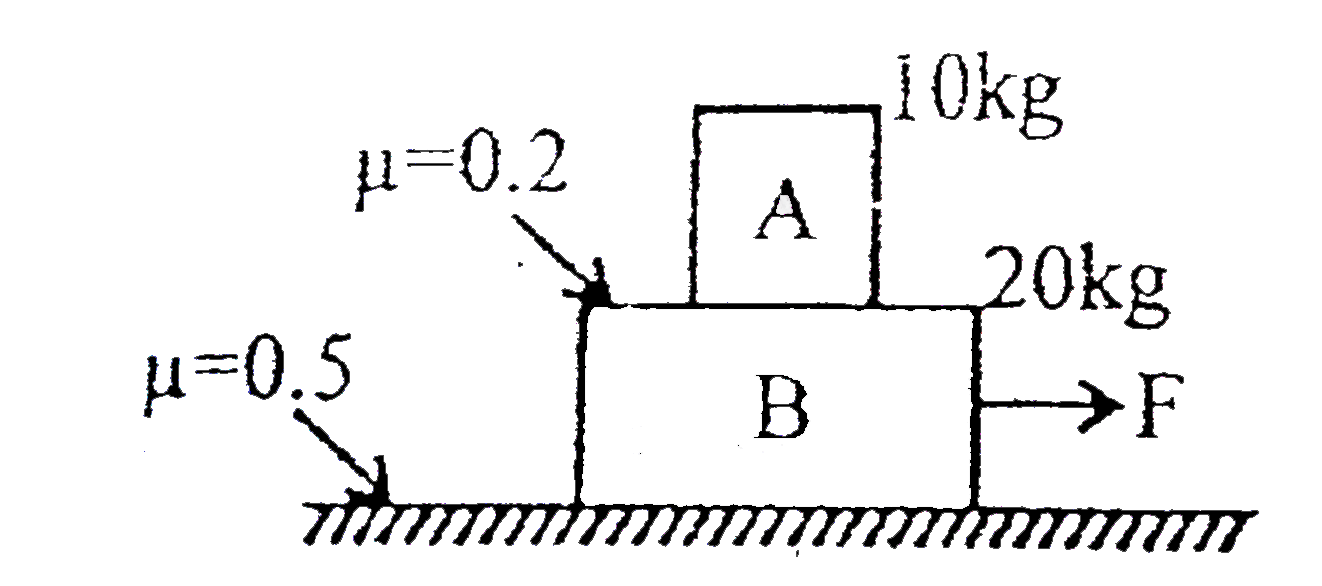 A20NB120NC150ND170N
A20NB120NC150ND170N - Question 3 - Select One
The system of two blocks is at rest an shown in the figure. A variable Horizontal force is applied to the upper block. The maximum possible constant force exerted by the horizontal ground surface on the lower block is ( coefficient of friction for both the contracts is μ )
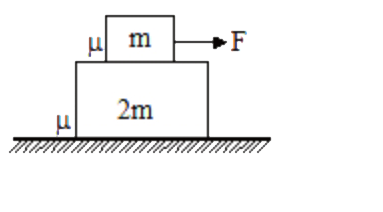 A3mg√1+μ2B3μmgCμmgDmg√9+μ2
A3mg√1+μ2B3μmgCμmgDmg√9+μ2
Block B of mass 2kg rests on block A of mass 10kg. All surfaces are rought with the value of coefficient of friction as shown in the figure. Find the minimum force F that should be applied on block A to cause relative motion between A and B. (g=10m/s2)
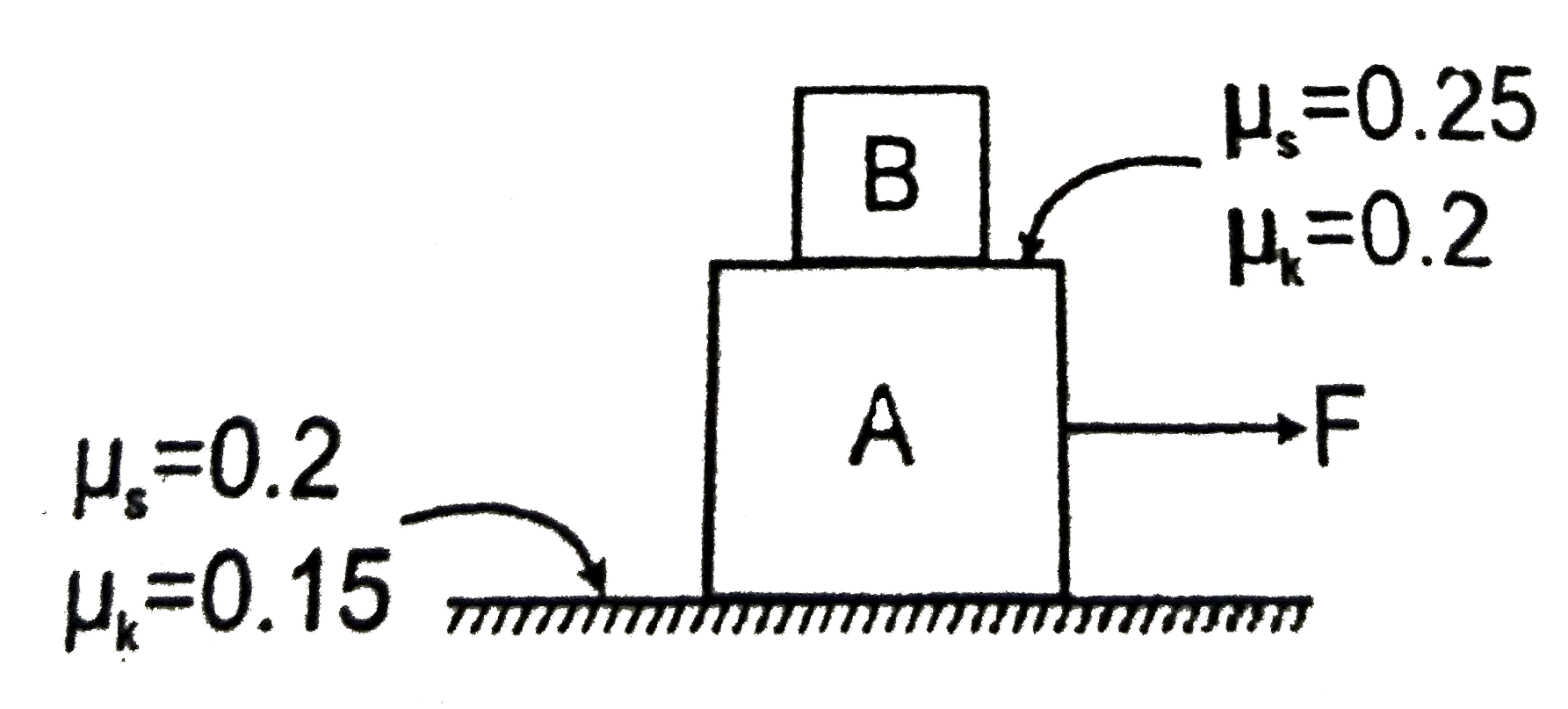 View Solution
View SolutionIn the arrangement shown in figure mA=mB=2kg. String is massless and pulley is frictionless. Block B is resting on a smooth horizontal surface, while friction coefficient between blocks A and B is μ=0.5. What maximum horizontal force F can be applied so that block A does not slip over the block B? (g=10m/s2)
 View Solution
View SolutionTwo blocks A and B are placed in contace on a horizontal surface. Faces of block A and B, which are in contact , are inclined at 30∘ with the horizontal, as shown. There is no friction between block A and any surface which is in contact with this whereas friction coefficient between block B and the surface is 1√3. A force F is applied in horizontal direction on block A. What is the minimum value of F at which the block B just start moving rightwards ?
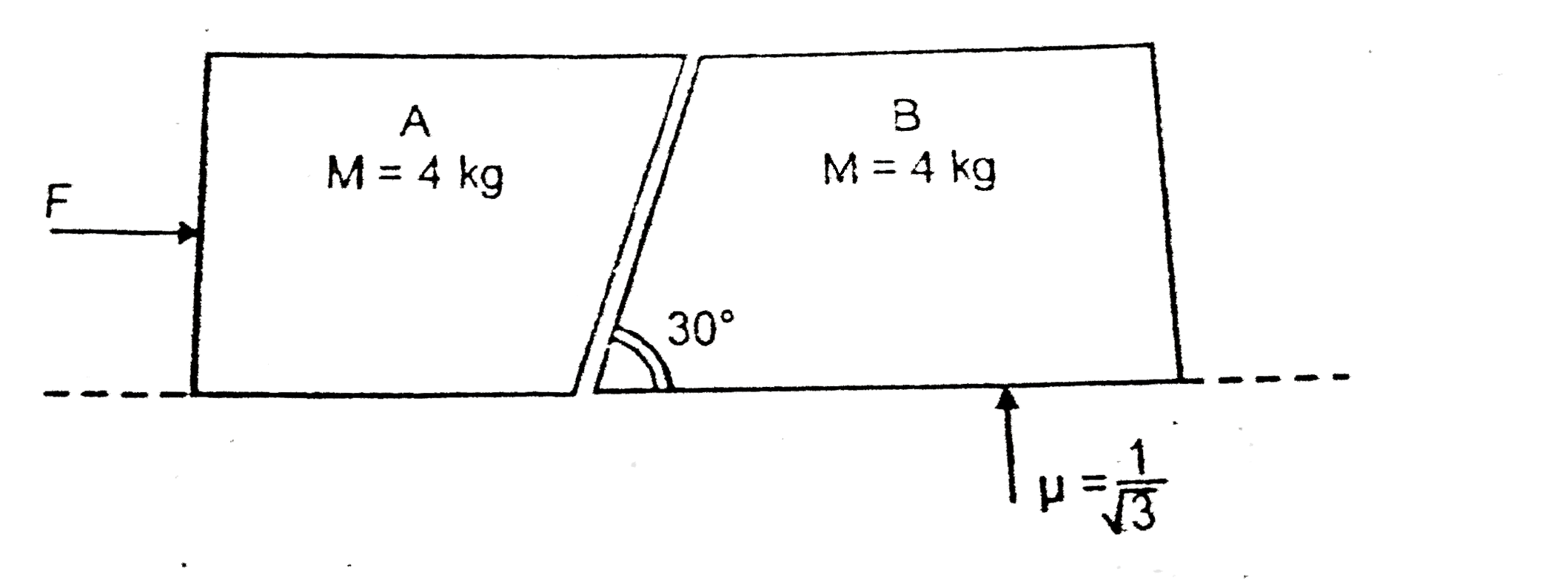 View Solution
View SolutionIn the arrangement shown in figure, m_A = m_B = 2kg. String is massless and pulley is frictionless. Block B is resting on a smooth horizontal surface, while friction coefficient beteen block A and B is μ=0.5 . the Maximum horizontal force F that can be applied so that block A does not slip over block B is.
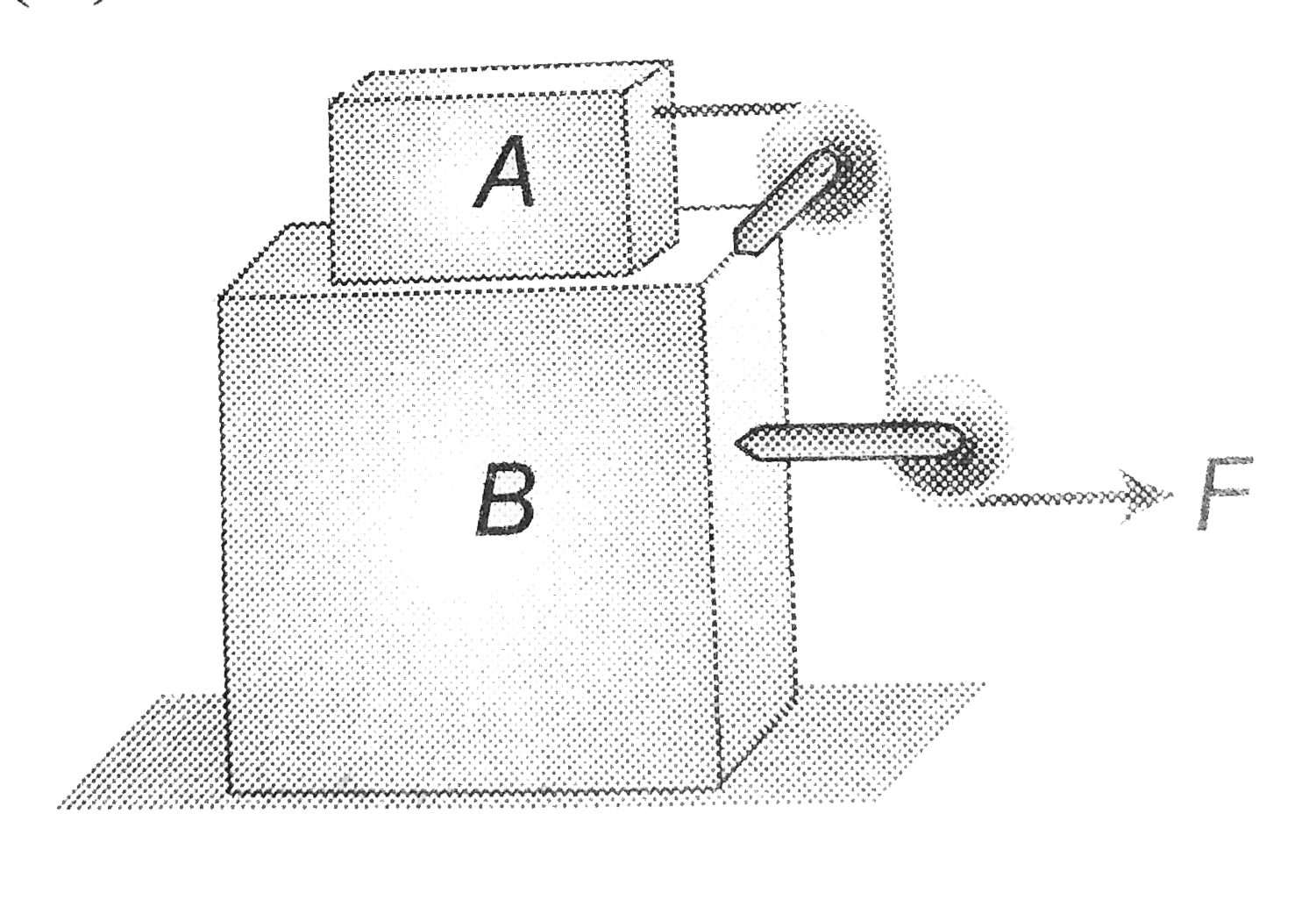 View Solution
View SolutionTwo blocks A and B each of mass m are placed on a smooth horizontal surface. Two horizontal force F and 2F are applied on blocks A and B, respectively, as shown in fig. Block A does not slide on block B. Then then the normal reaction acting between the two blocks is (assume no friction between the blocks)
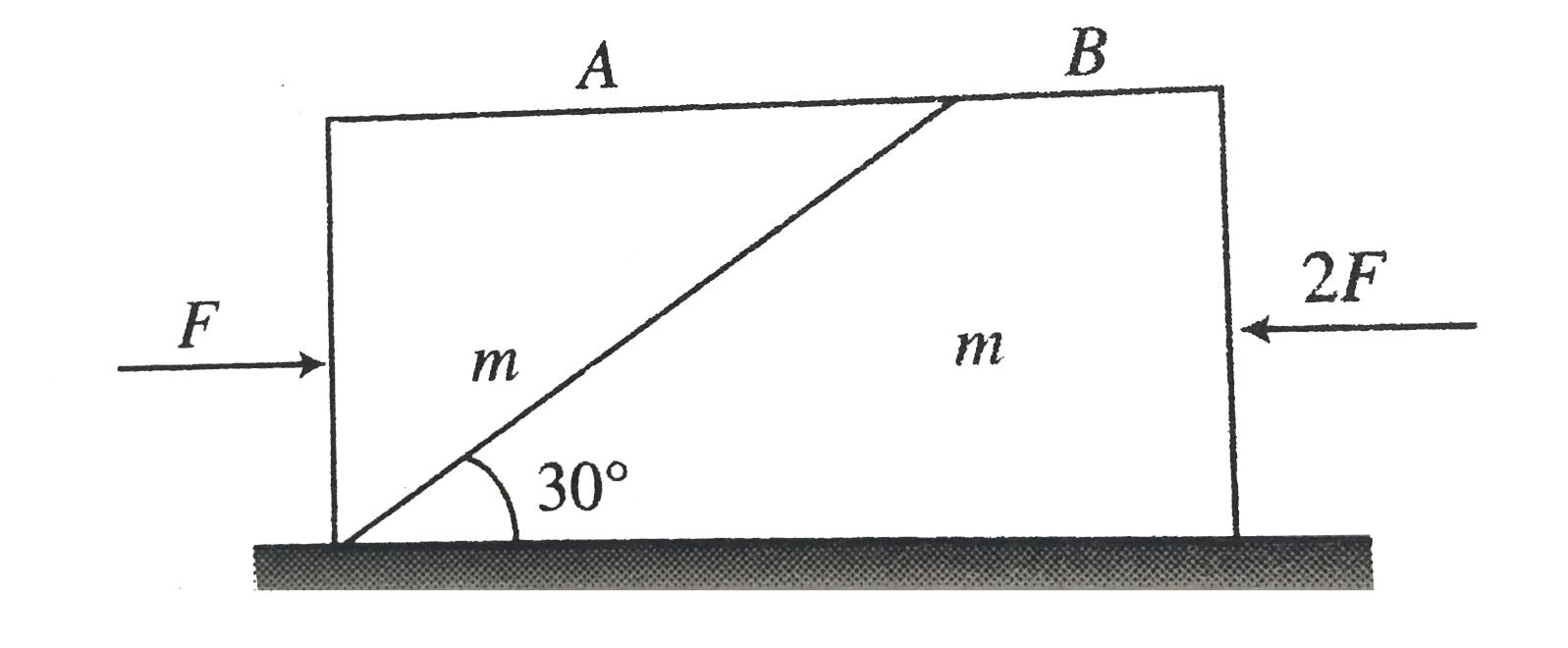 View Solution
View Solution

